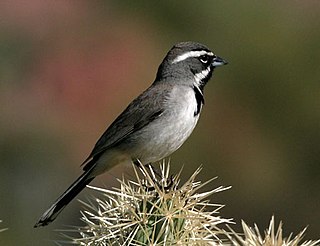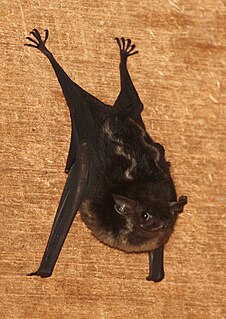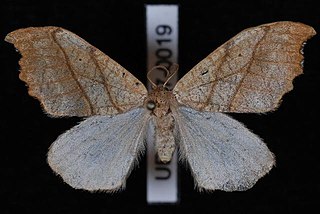Related Research Articles

The black-throated sparrow is a small New World sparrow primarily found in the southwestern United States and Mexico. It is the only member of the genus Amphispiza; the five-striped sparrow, formerly also classified in Amphispiza, is now thought to be in the monotypic genus Amphispizopsis.
The bronze catfish, also known as the giant catfish, the roundsnout sea catfish, or the two-line sea catfish, is a species of catfish in the family Ariidae. It was described by Achille Valenciennes in 1840, originally under the genus Bagrus. It inhabits marine, brackish and freshwaters throughout the Indo-western Pacific. It reaches a maximum standard length of 62 cm (24 in).

The greater sac-winged bat is a bat of the family Emballonuridae native to Central and South America.

Lists of Linyphiidae species cover species of the spider family Linyphiidae. The overall list is divided into alphabetical sub-lists.

The western green lizard is a wall lizard of the family Lacertidae.

Clanis bilineata, the two-lined velvet hawkmoth, is a moth of the family Sphingidae first described by Francis Walker in 1866.

Onciderini is a tribe of longhorn beetles of the subfamily Lamiinae, they are prevalent across Europe in nations such as Turkey, and Finland.

Trestonia is a genus of longhorn beetles of the subfamily Lamiinae, containing the following species:

Falcaria bilineata, the two-lined hooktip moth, is a moth in the family Drepanidae. It was described by Packard in 1864. It is found in North America, where it has been recorded from Newfoundland to New Jersey, west to Oregon and north to British Columbia. The habitat consists of deciduous woodlands.
Trestonia albilatera is a species of beetle in the family Cerambycidae. It was described by Francis Polkinghorne Pascoe in 1859. It is known from Brazil.
Trestonia capreola is a species of beetle in the family Cerambycidae. It was described by Ernst Friedrich Germar in 1824. It is known from Brazil, Argentina and Paraguay.
Trestonia confusa is a species of beetle in the family Cerambycidae. It was described by Dillon and Dillon in 1946. It is known from Colombia, Costa Rica and Panama.
Trestonia exotica is a species of beetle in the family Cerambycidae. It was described by Galileo and Martins in 1990. It is known from Brazil.
Trestonia fasciata is a species of beetle in the family Cerambycidae. It was described by Martins and Galileo in 1990. It is known from Colombia.

Trestonia frontalis is a species of beetle in the family Cerambycidae. It was described by Wilhelm Ferdinand Erichson in 1847. It is known from Brazil, Ecuador, Bolivia, Colombia and Peru.
Trestonia fulgurata is a species of beetle in the family Cerambycidae. It was described by Buquet in 1859. It is known from Guadeloupe. It feeds on Inga ingoides.
Trestonia nivea is a species of beetle in the family Cerambycidae. It was described by Martins and Galileo in 1990. It is known from Brazil, Surinam and French Guiana.
Trestonia rugosicollis is a species of beetle in the family Cerambycidae. It was described by Martins, Galileo and de Oliveira in 2009.
Trestonia signifera is a species of beetle in the family Cerambycidae. It was described by Buquet in 1859. It is known from Martinique and Guadeloupe.
Trestonia turbula is a species of beetle in the family Cerambycidae. It was described by Monné and Fragoso in 1984. It is known from French Guiana, Ecuador, Brazil and Peru.
References
- ↑ BioLib.cz - Trestonia bilineata. Retrieved on 8 September 2014.